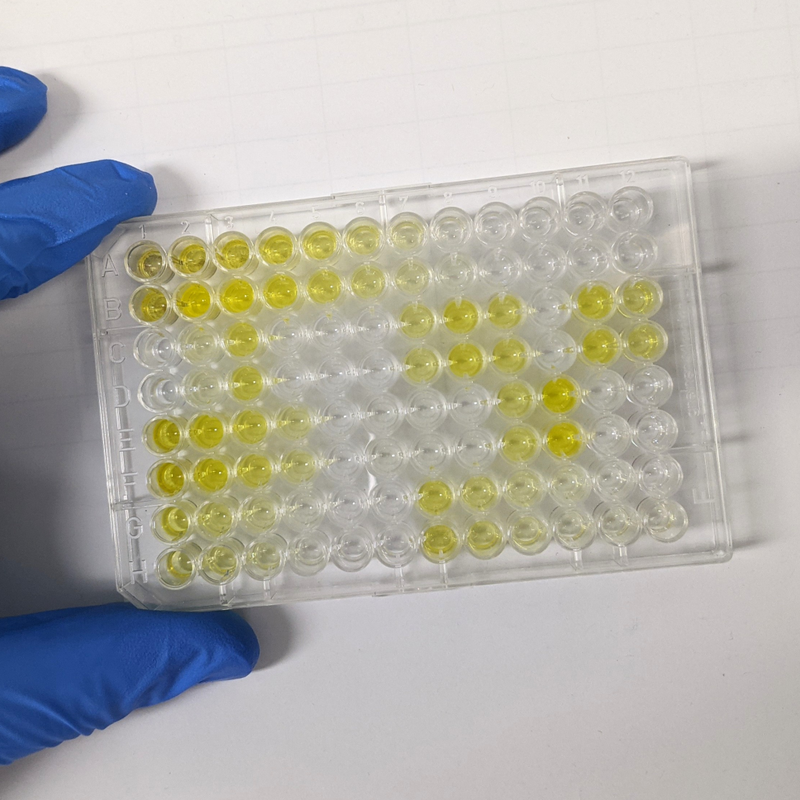Why we trap Melbourne’s air and what we do with it?
Dec. 17, 2022
Measuring how much allergen is in Melbourne's air.
A few weeks ago, we shared a photo of a filter that had been used to collect a week's worth of material from Melbourne’s air.
Many of you were shocked to see how dirty the filter was and asked us what the filter looked like at the start of the week. To satisfy your curiosity, the image below (Figure 1) shows the used filter next to an unused filter.

Figure 1: A clean filter (left) and the filter with 7 days' worth of material from Melbourne’s air (right).
You also asked us why we’re even doing this? What are we hoping to learn from these dirty filters?
Put simply, although we count pollen, particularly grass pollen, people with hay fever and asthma aren’t actually sensitive to pollen itself but to extremely small molecules called allergens that are part of the pollen grain. In someone with an allergy, allergens stimulate certain types of immune cells in their body, and it is the molecules released by these activated cells that triggers the symptoms of hay fever and asthma.
This season, we're working with Dr Nithya Fernandopulle and Dr Graham Mackay (Figure 2) from the Department of Biochemistry and Pharmacology at the University of Melbourne, to see how much of a particular grass pollen allergen called the group V allergen (pronounced group 5 allergen) there is in the air, and whether the amount of this allergen per grass pollen grain stays the same or changes over the season.

Figure 2: Dr Graham Mackay (left) and Dr Nithya Fernandopulle (right).
At the moment, we think of every grass pollen grain we see as being highly allergenic. But maybe that’s not right and the potency of grass pollen as a source of allergens like the group V allergen changes over the season.
As there’s not that much group V allergen in each grass pollen grain, we need to trap particles from a lot of air in order to measure it. Hence the need for the filter.
Nithya and Graham are using a technique called a ‘sandwich’ ELISA (Enzyme-linked immunosorbent assay) to measure the group V allergen trapped on the filters. This technique uses two different antibodies (think of each one like as a piece of bread) to accurately detect very low amounts of allergen (think of the allergen like the meat or suitable vegetarian alternative in the sandwich). An enzyme attached to one of the antibodies can then be used to generate a coloured product that we can measure to find out how much allergen there was in the sample (Figure 3). The ELISA technique allows us to process and measure lots of samples simultaneously, which means we’ll be able to look at the amount of allergen present in the air each day during the season.

Figure 3: A multiwell plate showing the coloured product produced using the Enzyme-linked immunosorbent assay (ELISA).
Knowing how much allergen there is in the air and how it relates to grass pollen levels during the peak allergy months will help us give you better information about when your hay fever symptoms might be bad and enable you to take action.
Learning what else is on the filter other than pollen and its allergens will be the focus of our next blog post, so stay tuned.


